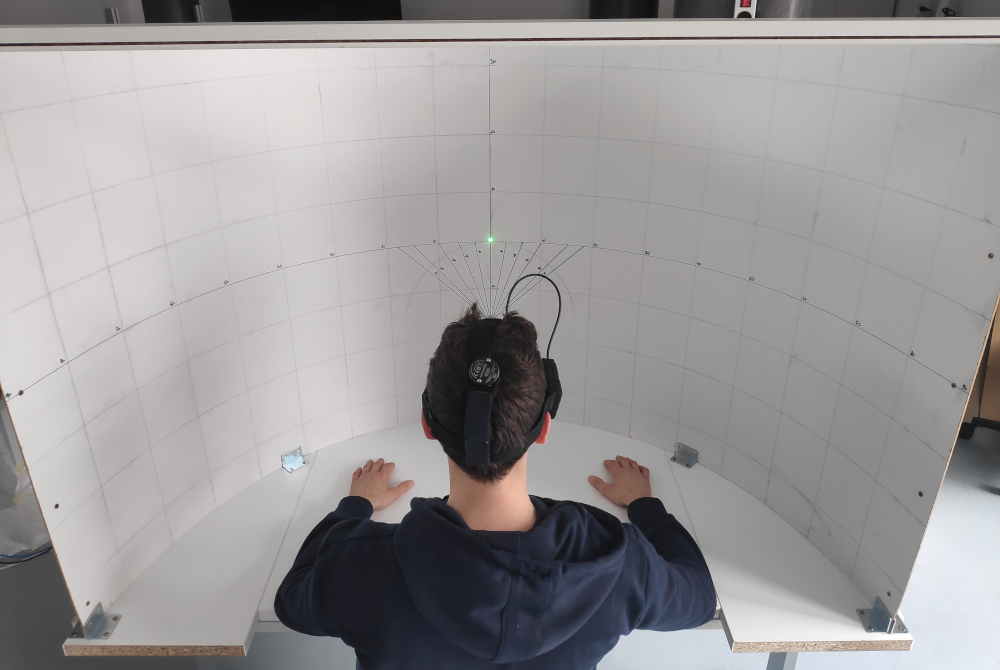BiMoNeck
Biomechanical Model of Head and Neck with Motor-Controlled Motion

Cervical dystonia, the most prevalent form of focal dystonia, that affects 5 to 30 individuals per 100.000 people is a challenging neurological movement disorder that perplexes medical professionals in its intricate manifestations. This condition, characterised by sustained or repetitive muscle contractions presents a spectrum of symptoms including involuntary muscle spasms, tremors, and aberrant movements, affecting daily activities, speech, swallowing, and physical coordination.
Despite its prevalence, the precise aetiology of cervical dystonia remains elusive, hindering the development of targeted therapeutic interventions. Current treatment modalities predominantly rely on injections of Botulinum toxin, a potent neurotoxin that temporarily weakens dystonic neck muscles. This intervention, while effective in alleviating symptoms, has a relatively short duration of action, necessitating repeated injections every two to three months. However, the selection of specific muscles for injection is solely based on clinical judgment. Because of insufficient identification of the responsible muscles the effectiveness of this method is greatly decreased to 58–90%.
A critical aspect of understanding cervical dystonia involves discerning the specific muscles activated during distinct head motions and episodes of head tremors. Medical professionals currently grapple with the absence of tools that would facilitate accurate muscle identification and targeted treatment interventions. A groundbreaking avenue for enhancing the efficacy of cervical dystonia therapy therefore
lies in the construction of a mathematical biomechanical head-neck model to simulate the neck muscle activities and understand their impact on the posture and motion of the cervical region.
In this project we will therefore create a dynamical biomechanical model that will offer a quantitative approach to model cervical spine motion and identify the activated muscles, shedding light on the complex neuromuscular interactions that govern cervical behaviour and bridge the knowledge gap between cervical spine behaviour and the underlying mechanisms that characterise cervical motion. Our biomechanical head-neck model will encompass the entire (upper and lower) cervical spine, containing the base link, the seven cervical vertebrae (C1-C7), intervertebral discs, and the skull. Furthermore, the model will incorporate vertebral joints featuring three rotational degrees of freedom, neck muscles, and ligaments, presenting a holistic representation of the intricate interactions governing cervical biomechanics. All the bones will be characterised by dynamic rigid bodies, the intervertebral discs and the ligaments will be characterised by their elastic properties, while the muscles will be modelled as actuators, each acting on its corresponding anchoring point on the specific bone. To validate and refine the
developed model, motion capture and electromyography data of the human cervical system will be used in combination with artificial intelligence learning algorithms to enable the simulation of the neck motor control mechanism.
The developed dynamical head-neck system will accurately simulate real human motion and will envision a paradigm shift in the understanding and simulation of the motion of the cervical spine. With a nuanced understanding of head-neck motion mechanisms, doctors and other healthcare practitioners could identify activities of specific muscles and perform targeted clinical treatment as well as prescribe exercises designed specifically to target individual muscles. In addition, the efficacy of treatment and rehabilitation would be this way enhanced and further paths would be paved also for preventive measures and the creation of personalised rehabilitation and training programs.
Publications
Book Sections
Pervasive Monitoring System for Cervical Dystonia: A Feasibility Study Using 9DOF Sensors Book Section
In: Hornos, Miguel J.; Yu, Gašper Slapničarand Jian (Ed.): Intelligent Environments 2024: Combined Proceedings of Workshops and Demos & Videos Session, vol. 33, pp. 78–87, 2024, ISBN: 978-1-64368-521-2.
Proceedings Articles
Human-Human Teleoperated Interaction for Sit-to-Stand Assistance with Humanoid Robots Proceedings Article
In: Jovanović, Kosta; Rodić, Aleksandar; Raković, Mirko (Ed.): Advances in Service and Industrial Robotics, pp. 477–485, Springer Nature Switzerland, Cham, 2025, ISBN: 978-3-032-02106-9.
Postavitev eksperimenta za vrednotenje kolenskega eksoskeleta JSI-KneExo Proceedings Article
In: Andrej, TROST Andrej ŽEMVA (Ed.): Zbornik štiriintridesete mednarodne Elektrotehniške in računalniške konference ERK 2025 (Online) = Proceedings of the 34th International Electrotechnical and Computer Science Conference ERK 2025 : Portorož, Slovenija, 25. - 26. september 2025, COBISS.SI-ID - 250916099, pp. 185–188, Slovenska sekcija IEEE: Fakulteta za elektrotehniko 2025.
Invited lectures
Partners

JSI Team
| Members | COBISS ID | Role | Period |
| Brecelj Tilen | 37467 | PI | 2025 – 2027 |
| Petrič Tadej | 30885 | Researcher | 2025 – 2027 |
| Leon Žlajpah | 03332 | Researcher | 2025 – 2027 |
| Simon Reberšek | 39258 | Technician | 2025 – 2027 |

UKC Team
| Members | COBISS ID | Role | Period |
| Tatjana Filipović | 37467 | Researcher | 2025 – 2027 |
Founding source

ARRS grant no.: J2-60036
